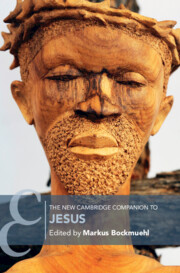Book contents
- The New Cambridge Companion to Jesus
- Cambridge Companions to Religion
- The New Cambridge Companion to Jesus
- Copyright page
- Contents
- Contributors
- Acknowledgements
- A Note on Referencing and Abbreviations
- Introduction
- Part I Origins
- Part II The Diversity of Reception
- 8 The Apocryphal Jesus
- 9 The Islamic Jesus
- 10 Jesus in Christian Material Culture
- 11 Jesus in Art and Music
- 12 Jesus in the Story of Spirituality and Worship
- Part III Ethics, Theology, and Critical Scholarship
- Part IV The Global Jesus Today
- Part V Outlook
- Bibliography
- Ancient Sources Index
- Subject Index
- Cambridge Companions to Religion
- References
9 - The Islamic Jesus
from Part II - The Diversity of Reception
Published online by Cambridge University Press: 15 November 2024
- The New Cambridge Companion to Jesus
- Cambridge Companions to Religion
- The New Cambridge Companion to Jesus
- Copyright page
- Contents
- Contributors
- Acknowledgements
- A Note on Referencing and Abbreviations
- Introduction
- Part I Origins
- Part II The Diversity of Reception
- 8 The Apocryphal Jesus
- 9 The Islamic Jesus
- 10 Jesus in Christian Material Culture
- 11 Jesus in Art and Music
- 12 Jesus in the Story of Spirituality and Worship
- Part III Ethics, Theology, and Critical Scholarship
- Part IV The Global Jesus Today
- Part V Outlook
- Bibliography
- Ancient Sources Index
- Subject Index
- Cambridge Companions to Religion
- References
Summary
In the Islamic tradition, Jesus is revered as a prophet to the Israelites, not as divine himself. The Qur’an selectively adopts Christian narrative lore about Jesus and Mary, omitting key gospel narratives like the passion. Jesus’s miraculous conception is acknowledged, paralleling Christian tradition without implying divinity, while his death on the cross is recast as a divine deliverance of Jesus from his enemies. The post-Qur’anic tradition portrays Jesus as a world-renouncing ascetic and stresses his humanity and subordination to God.
- Type
- Chapter
- Information
- The New Cambridge Companion to Jesus , pp. 137 - 153Publisher: Cambridge University PressPrint publication year: 2024

